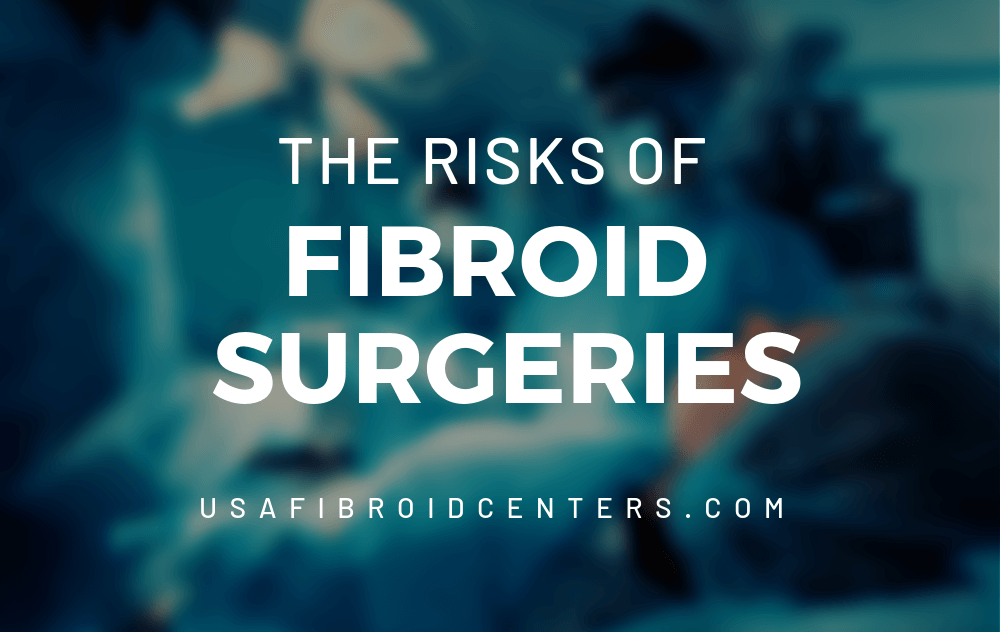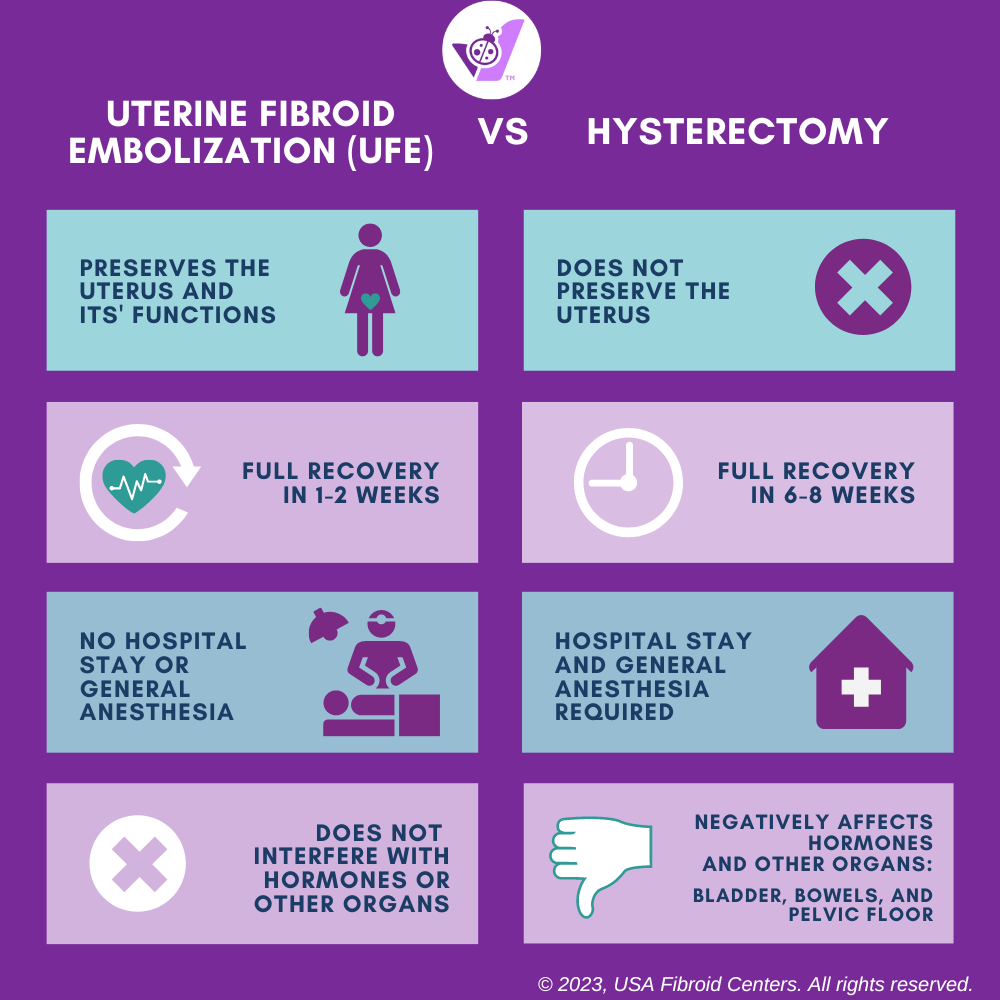
What is Fibroid Surgery?
Fibroid surgery removes fibroids, and two of the most common procedures are myomectomy and hysterectomy. A partial hysterectomy includes removal of the uterus, while a total hysterectomy includes the removal of the ovaries. During a myomectomy, the fibroids are removed while leaving the uterus intact. However, both of these surgeries come with serious risks for the patient.
HEAR YOUR TREATMENT OPTIONS: SCHEDULE A CONSULTATION
Is Fibroid Surgery Dangerous?
Fibroid surgery is invasive, requiring a hospital stay and lengthy recovery. hysterectomy results in permanent infertility since the uterus is removed. In both surgeries, there is the risk of other organs being damaged. You may want to think twice before deciding on surgery for fibroid removal.
Uterine fibroid embolization (UFE) is a non-surgical alternative to a hysterectomy or myomectomy. At USA Fibroid Centers, UFE is performed by our experienced interventional radiologists as an outpatient procedure, requiring no hospital stay or stitches. UFE has a shorter recovery time than any fibroid surgery, preserves a woman’s fertility, and can alleviate painful fibroid symptoms.
What Are The Risks of Fibroid Surgery?
Uterine fibroid surgery may present a range of issues, starting with a longer recovery time and an increased risk for heart disease, uterine cancer, infertility, and regrowth of fibroids. Before scheduling fibroid surgery, you should speak with your doctor about these potential complications.
1. INCREASED RISK OF HEART DISEASE AND RELATED CONDITIONS
According to a 2018 study published in the journal Menopause, having a hysterectomy, a type of fibroids surgery, is associated with a long-term risk of cardiovascular and metabolic conditions, especially when the patient is 35 years old or younger. This risk occurs even when the ovaries are conserved during the hysterectomy.
2. RISK OF SPREADING UTERINE CANCER
One procedure, laparoscopic power morcellation, has been linked to the spread of uterine cancer. During this procedure, surgeons use a medical device to break the fibroids into pieces to make removal through the abdomen easier. If any growths presumed to be fibroids are cancerous, breaking them up can allow cancer to spread to the abdomen and pelvis, making it more difficult to treat later. This is also common in other surgeries for fibroid removal.
3. LONG RECOVERY TIME
After undergoing a hysterectomy or fibroids surgery, especially if it’s fibroids in uterus surgery, women may remain in the hospital between two to three days following surgery. Once at home, the recovery time for a hysterectomy is typically between six to eight weeks. During this time, you may be restricted from lifting and exercising for four to six weeks.
4. INABILITY TO HAVE CHILDREN
Patients who choose to have a hysterectomy to remove fibroids will not be able to get pregnant in the future. While a myomectomy leaves the womb intact, the procedure can also cause uterine problems, like uterine infections and scarring, that might affect future pregnancies and fertility.
5. FIBROID REGROWTH
While hysterectomies and other fibroids surgeries completely remove the risk of fibroid regrowth, women undergoing a myomectomy might experience a relapse. Fibroids can regrow if they aren’t completely removed during the surgery for fibroid removal.
6. OTHER RISKS OF GETTING A HYSTERECTOMY OR MYOMECTOMY
There are several potential complications of a hysterectomy or myomectomy:
- Infection
- Bleeding
- Organ damage
- Problems with the bowels or urination
- Painful abdominal scar tissue
- Pelvic pain
- Early menopause symptoms
- Scarring and tissue damage
If you are concerned about any of the above or other uterine fibroid surgery risks, know that you have alternatives. UFE is a minimally invasive procedure that can relieve much of your worry while reducing the symptoms you’ve been dealing with.
Avoid The Risks of Fibroid Surgery With Uterine Fibroid Embolization
Uterine Fibroid Embolization (UFE) can help shrink fibroids and alleviate symptoms. UFE avoids many fibroid removal risks because it is non-surgical, leaving the uterus intact. There is a shorter recovery time with no hospital stay, unlike fibroids in uterus surgery, allowing you to get back to your everyday life sooner.
Contact Us for Non-Surgical Treatment Options
If you want to experience freedom from the painful symptoms of uterine fibroids without dealing with the risks involved with surgery, USA Fibroid Centers is here to help. We will work with you on a solution that allows you to get your life back on track, especially if it means you don’t have to get an invasive fibroids in uterus surgery.
We make getting the help you need with telemedicine appointments or in-person visits easy. Schedule a consultation online or give us a call at 855.615.2555.




